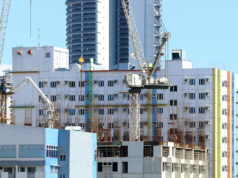Economy ripe for bank reserve cut — BSP chief
By Melissa Luz T. Lopez
Senior Reporter
THE ECONOMY is ripe for another cut in bank reserves, the Bangko Sentral ng Pilipinas (BSP) signaled to the banking industry on Friday last week, even as one senior monetary official noted that liquidity conditions need to be tight enough to warrant such adjustments.
In a speech delivered on behalf of BSP Governor Nestor A. Espenilla, Jr. at the annual reception for bankers, BSP Officer-in-Charge and Deputy Governor Chuchi G. Fonacier said 2019 is off to a good start with inflation on its way down, which in turn will allow the central bank to resume gradual cuts in the reserve requirement ratio (RRR) imposed on big banks.
“We now see scope for further reduction on the RRR as we see inflation returning firmly to within target and with inflation expectations stabilizing,” Ms. Fonacier said.
Mr. Espenilla has been on an extended medical leave due to tongue cancer.
“Our latest forecasts indicate that inflation will return to the 2-4% target this year and in 2020,” Ms. Fonacier said.
“Nonetheless, we approach the year with utmost vigilance and prudence, mindful of the unfolding global economic landscape. There are still significant lingering concerns and imminent risks particularly on the external front,” she noted.
“But we cannot allow these headwinds from deflecting us from our deep financial reform agenda.”
The BSP introduced two cuts of 100 basis points (bps) each to the 20% reserve standard for universal and commercial banks in 2018, which it described as “procedural” tweaks to reduce the cost of borrowing money in the financial system.
The RRR now stands at 18% of a bank’s total deposits.
This is in line with Mr. Espenilla’s long-term goal of bringing the RRR down to single-digit level by 2023, when his six-year term as governor ends.
Central bank officials had to pause with the reserve cuts and shifted gears to raise policy rates starting in May 2018, in a bid to rein in inflation that zoomed past the 2-4% target band for the year.
Eventually, the BSP placed the planned RRR cuts in the back burner to focus on tempering price increases, saying it will resume at a time when inflation is decelerating.
From a multiyear peak of 6.7% in September and October, inflation dropped sharply to six percent in November and 5.1% in December — a trend seen sustained this year. The BSP even expects inflation returning to below four percent by the end of the first quarter, and the full-year at 3.2% versus 2018’s 5.2% pace.
A 100-bp cut in reserves unlocks about P100-billion funds into the financial system, which banks can use in handing out more loans or for investments.
Separately, BSP Deputy Governor Diwa C. Guinigundo said policy makers must await “tight” liquidity conditions before further cuts in the reserve requirement can be introduced.
Apart from having a within-target monthly inflation reading and well-anchored inflation expectations, there should be actual “tightness” of money supply.
Mr. Guinigundo has said that domestic liquidity is not as tight as some market watchers observe it to be, citing strong demand for the BSP’s weekly term deposit auctions as well as for the Treasury’s regular offering of debt papers.
Overall money supply in the economy grew by 8.4% to P11.251 trillion in November, slightly picking up from the previous month’s 8.3%, latest central bank data showed.
ING Bank expects another RRR cut within first three months of 2019, while analysts at HSBC Global Research see three cuts this year starting in the second quarter.



